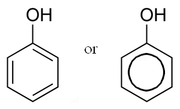This is a very controversial topic, but I stick by it 100%.
It used to be that wines, "grape" wines, had what were called "vintage" years, often every other year, usually in even-numbered years, because the weather was better. The wine tasted better from those years.
Wine connoiseurs looked forward to the "vintage" wines and paid a premium price for them. Soil played an important role in these wines but the most important role was the weather. But, over the years, beginning in the late 1960's and becoming a common practice by the 1970's worldwide, the use of chemicals to pH balance and taste adjust became wide spread and the wines, year after year, became "vintage" in taste and aroma.
Well, I "began" making wine in 1966 - a short-lived experiment as none of us had any idea about making wine. But later I got back into it.
In my family a lot of serious allergies exist. A couple of our family members cannot drink commercial wines becuase of the "stoppers" used in the wines to keep them from going bad. And I learned that, in general, wines with an above 14% alcohol level were generally self-preserving without any additives or preservatives. So when I began making wine I "shot for" a 15% alcohol content.
I quickly learned, with the blackberries, that 2 gallons of the 6-7% juice with 8 gallons of 16% sugar water equated to just under to just over the "magic" 14% alcohol level I needed. So I shoot for a beginning sugar level of about 17-18% in my blackberry wine and 16% in other fruit wines.
Because of this I use exclusively EC-1118 (the Champagne) yeast, which allows a higher yield (up to 18%) alcohol. But I have fermented the blackberry on its own "native" yeast with excellent results, even at the higher alcohol levels I strive for.
As an aside note here: For 2007 I will begin, blackberry only, using a very special new yeast called Artisan Extreme 20 Turbo Yeast, rated "up to" 20% alcohol in 18 days, but which provides actual yields of up to 25% alcohol. At that level we're in the brandy range. So on my own website (http://www.homemadefruitwines.com, not in service yet but soon) I'll keep this experiment posted as to results. This yeast, however, provides a cleaner alcohol and more flavorful fruit result, so I'm looking forward to next year's blackberry crop and resultant wine.
Thus, I use absolutely NO chemicals of any kind in my wines and winemaking, other than sanitation of utensils. The resultant flavor and aroma I get is strictly due to the combination of yeast, filtered water and that year's fruit used. Regardless of your allergies (except to alcohol, of course), you can drink my wine because there's nothing in them but fermented fruit juice and high alcohol as a preservative. Not even finings.
And I strongly urge others to adopt a "no chemicals" attitude and methodology in their own fruit winemaking efforts.
Windy Windblad, [email protected]
Edited by: windy0062
It used to be that wines, "grape" wines, had what were called "vintage" years, often every other year, usually in even-numbered years, because the weather was better. The wine tasted better from those years.
Wine connoiseurs looked forward to the "vintage" wines and paid a premium price for them. Soil played an important role in these wines but the most important role was the weather. But, over the years, beginning in the late 1960's and becoming a common practice by the 1970's worldwide, the use of chemicals to pH balance and taste adjust became wide spread and the wines, year after year, became "vintage" in taste and aroma.
Well, I "began" making wine in 1966 - a short-lived experiment as none of us had any idea about making wine. But later I got back into it.
In my family a lot of serious allergies exist. A couple of our family members cannot drink commercial wines becuase of the "stoppers" used in the wines to keep them from going bad. And I learned that, in general, wines with an above 14% alcohol level were generally self-preserving without any additives or preservatives. So when I began making wine I "shot for" a 15% alcohol content.
I quickly learned, with the blackberries, that 2 gallons of the 6-7% juice with 8 gallons of 16% sugar water equated to just under to just over the "magic" 14% alcohol level I needed. So I shoot for a beginning sugar level of about 17-18% in my blackberry wine and 16% in other fruit wines.
Because of this I use exclusively EC-1118 (the Champagne) yeast, which allows a higher yield (up to 18%) alcohol. But I have fermented the blackberry on its own "native" yeast with excellent results, even at the higher alcohol levels I strive for.
As an aside note here: For 2007 I will begin, blackberry only, using a very special new yeast called Artisan Extreme 20 Turbo Yeast, rated "up to" 20% alcohol in 18 days, but which provides actual yields of up to 25% alcohol. At that level we're in the brandy range. So on my own website (http://www.homemadefruitwines.com, not in service yet but soon) I'll keep this experiment posted as to results. This yeast, however, provides a cleaner alcohol and more flavorful fruit result, so I'm looking forward to next year's blackberry crop and resultant wine.
Thus, I use absolutely NO chemicals of any kind in my wines and winemaking, other than sanitation of utensils. The resultant flavor and aroma I get is strictly due to the combination of yeast, filtered water and that year's fruit used. Regardless of your allergies (except to alcohol, of course), you can drink my wine because there's nothing in them but fermented fruit juice and high alcohol as a preservative. Not even finings.
And I strongly urge others to adopt a "no chemicals" attitude and methodology in their own fruit winemaking efforts.
Windy Windblad, [email protected]
Edited by: windy0062









